Why are tulips planted in the fall, when and how to plant bulbs for spring abundant flowering and a number of questions that are asked by beginner gardeners when they see a neighboring plot drowning in bright colors. The main value of tulips is early flowering, when nature does not differ in a riot of colors. Therefore, everyone wants to get a lot of positive emotions from the lush flowering in the front garden - pictures of spring awakening.
Material Content:
Features of growing tulips
Tulip is a perennial bulbous plant from the Liliaceae family, adapted to grow in completely different climatic zones.
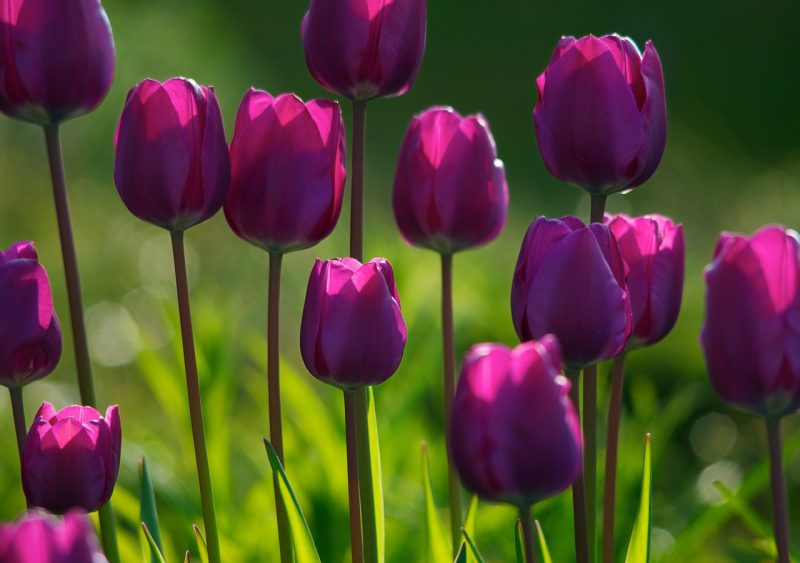
But despite the flower’s ability to adapt to various conditions and the ability to survive, in order to obtain a spring flowering meadow, one should take into account a number of features of the lilya representative even during autumn planting:
- timing and depth of landing;
- selection of planting material;
- site and soil preparation;
- landing method.
Almost anyone who is fond of growing tulips knows about the need to dig bulbs and store them in a dry, dark room after lush flowering in the spring. And with the advent of autumn, dug bulbs again planted in the garden. The implementation of such an approach will make it possible to constantly monitor the quality of cultivated tulips, promptly removing small, infected with fungal diseases and rotted planting material, while maintaining an excellent overall picture by maintaining a healthy plant condition. Moreover, by systematically digging and planting children, the florist can, without additional financial resources, plant a variety that appeals to his heart.
Important! Proper planting is the key to a successful result, expressed in a friendly and lush flowering.
The choice of bulbs for planting
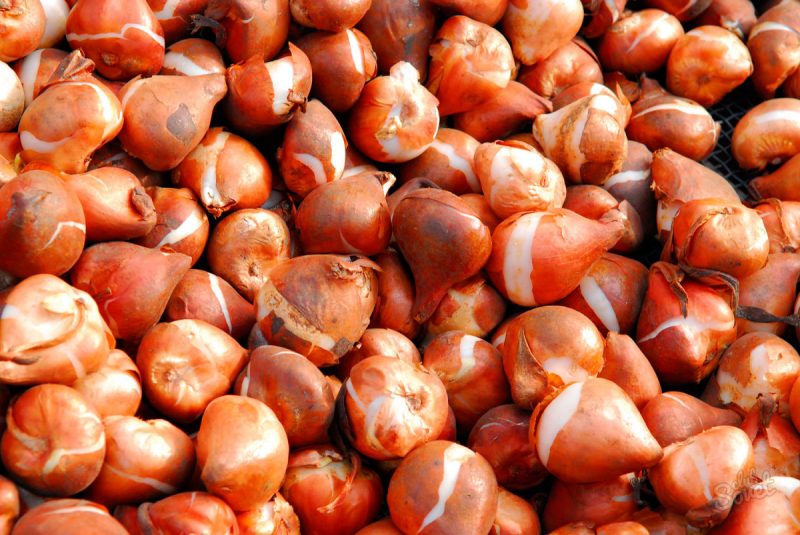
When buying bulbs, a thorough inspection of planting material is carried out, in which special attention is paid to the following parameters:
- Dimensions - bulbs with a diameter of 3-4 cm are suitable for planting in the garden.
- Appearance - the bulb should be covered with brown scales, which performs a protective function. The coating should maintain integrity and subtlety: a compacted shell indicates a long stay of the bulb in the ground, which can lead to a delay in seedlings.
- Condition - planting material should be dry, strong, and not have visible cracks and spots. Upon examination, mold, a growing embryo of the stem and soft base with the roots that appear should not be detected.
Attention! By acquiring one diseased bulb, the florist can infect healthy planting material, jeopardizing not only future flowering, but also the possibility of further cultivation of the entire batch of tulips.
Time and date of landing in the fall
The quantity and quality of blooming tulips with the advent of spring depends on the correct choice of time for planting bulbs. The main difficulty is the variability of weather conditions, due to which the timing can be shifted. As a rule, the optimal time is considered to be the period from mid-September to mid-October.
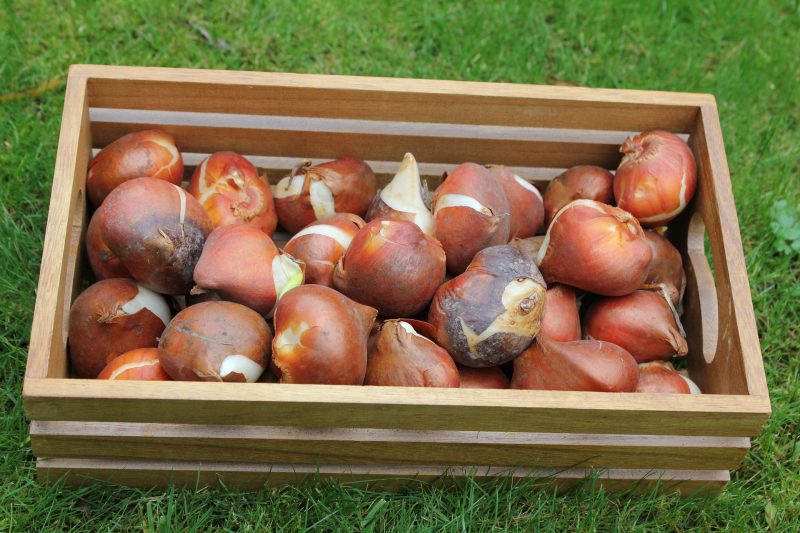
However, there are four tricks to help determine the timing.
- Tulips are planted one and a half months before freezing, according to long-term average indicators.
- Landing is carried out after lowering the temperature on the surface of the earth below 15 ° C.
- Landing is planned after the first morning frost, indicating night frost.
- Planting is carried out between four and eight weeks after the appearance of tulip planting material on sale.
How to plant tulips in the fall?
To achieve good flowering, a wealth of experience in growing tulips is not a key indicator. Novice gardeners can also get an excellent result when observing the rules for planting spring flowers.
Seat selection
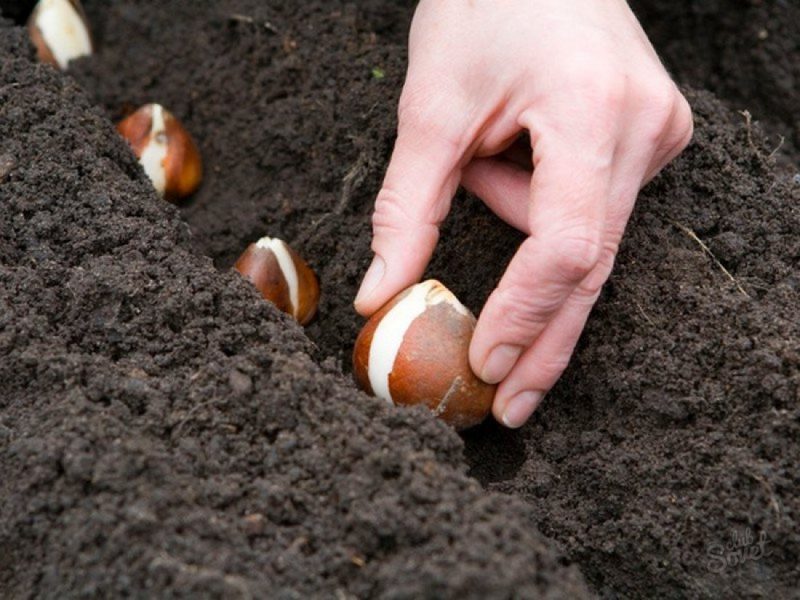
The most suitable area for planting bulbs is a well-lit area: lack of light leads to stretching and curving of the plant, as well as the loss of intense color, for which the flower is so appreciated by gardeners. Poor tolerance of stagnation of water and strong winds by a bulbous flower requires the gardener to search for an even area without depressions and drafts.
Soil requirements
The flower prefers to grow on neutral or slightly acidic soils: an increased level of acidity provokes the formation of “blind” buds. Before planting, the soil should be enriched with nutrients by purchasing special fertilizers for bulb plants in a flower shop or by preparing a nutrient composition on your own.
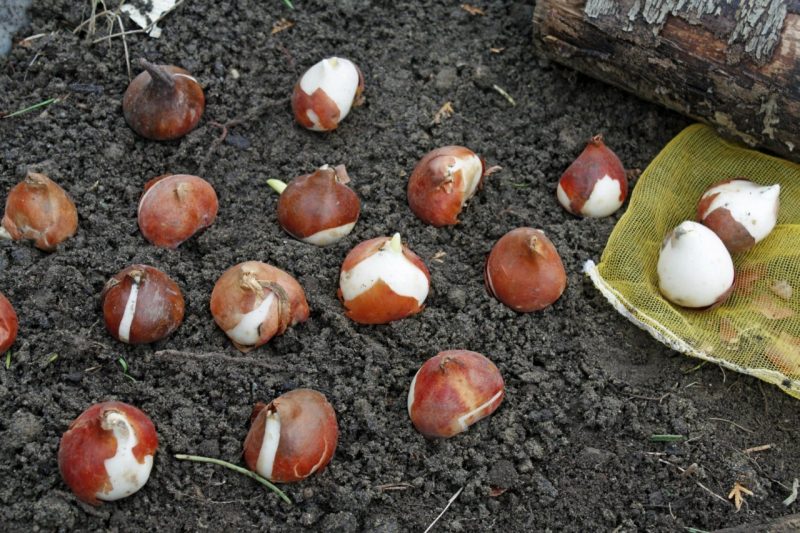
To improve the fertile soil layer per 1 m2 you will need to make:
- compost or rotted manure - 2 buckets;
- dolomite flour - ½ kg;
- wood ash - 200 g;
- double superphosphate - 50 g;
- ammonium nitrate - 25 g.
Important! The use of fresh manure, which acts as a source of infection, is strictly not allowed. Such organic fertilizer can be applied to the site only three years before the planned planting of tulips.
Preparing bulbs for planting
Before planting tulips, it is necessary to calibrate, sort and disinfect the bulbs, which will help to facilitate the planting process, not to confuse varieties and protect planting material from damage by various diseases.
- Calibration and sorting - all planting material is grouped by variety, and then divided by the diameter of the bulbs. It is better to refrain from using small fractions, provided that the variety is propagated in sufficient quantities.
- Etching - disinfection is carried out using a solution of potassium permanganate, "Fundozol", "Topsina-M", where the bulbs are placed for half an hour.Processing can also be carried out during planting: planting material half-sprinkled with earth is poured with the working fluid of the last two preparations at a rate of 1 liter per linear meter.
Advice! For faster rooting, growth stimulators can be used if desired. If tulips should be planted closer to winter, then their use is necessary.
What depth should I plant?
Depth of landing directly depends on the size of the planting material. When planting, it is necessary to be guided by the rule: the soil layer above the bulb should be twice as large as the diameter of the bulb itself. If its diameter is 3 cm, then the soil layer on top should not be thinner than 6 cm. This is due to the fact that children, who must be completely covered by soil, are formed above the mother's bulb. When acquiring larger tulips, this rule also applies, however, it should be borne in mind that the maximum depth of planting is considered a value of 15 cm.
At what distance can I plant tulips?

The distance between the bulbs depends on their size and variety:
- Large bulbs are planted with a distance of at least 10 cm.
- When planting medium and smaller tulips, the distance is maintained from 5 to 8 cm.
- If planting is carried out by groups of varieties, then a distance of 20 cm is maintained between them, which avoids mixing bulbs of different varieties when digging.
Attention! If the planting material is large, the planting is carried out with a large distance in order to avoid oppression by one plant of its neighbors.
Planting tulips in the open ground
Depending on the desired result in spring, tulips can be planted in 4 ways:
- In the wells - the most popular and simplest method, for the implementation of which the bulbs are aged in a disinfecting preparation, and then are planted in holes with a depth equal to the triple diameter of the bulb.
- In trenches - planting in this way is carried out by collectors who want to avoid the possibility of mixing varieties. If necessary, landings of several rows of trenches are prepared at a distance of 25-30 cm from each other.
- In beds - the method is used to create any flowering composition. Bulbs of different varieties are located in a groove made by a shovel in the form of a pattern born in the imagination of a grower.
- In the basket - a convenient planting method, which allows digging to find all the planted bulbs without losing children, and also protect the planting from damage by mouse-like rodents. For planting in this way, it is enough to find a plastic basket, place in a prepared hole and sprinkle with a small amount of fertile soil. Then distribute the bulbs in it and sprinkle with the remaining soil.
Attention! Regardless of the method chosen, the grower must know that the bulbs are by no means pressed into the soil, but are placed in a pre-prepared recess.
Tulip care after planting
After stable frosty weather with a slight minus, plantings are mulched with a peat layer of up to 5 cm, which prevents cracking of the soil during the winter season and ensures a stable temperature regime at the depth of the onion. With the help of mulching, damage to the roots of tulips is prevented, the loose structure of the soil is preserved, and clogging of weeds is reduced.
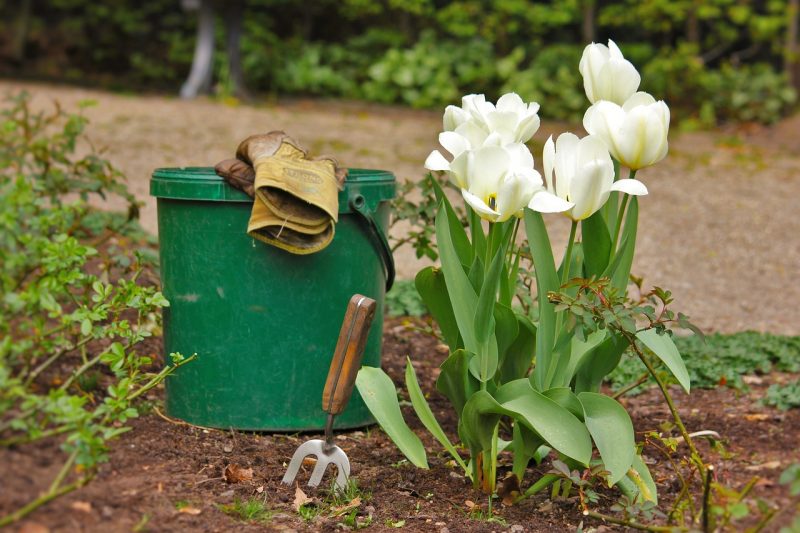
Important! With the advent of spring, the peat layer is not removed.
Thus, non-compliance with agrotechnical requirements for planting bulbs: improperly selected dates, place, poor-quality planting material and other irregularities may cause the homestead to be deprived of early spring saturated colors with the advent of spring. To prevent this, you should simply adhere to the above rules.












